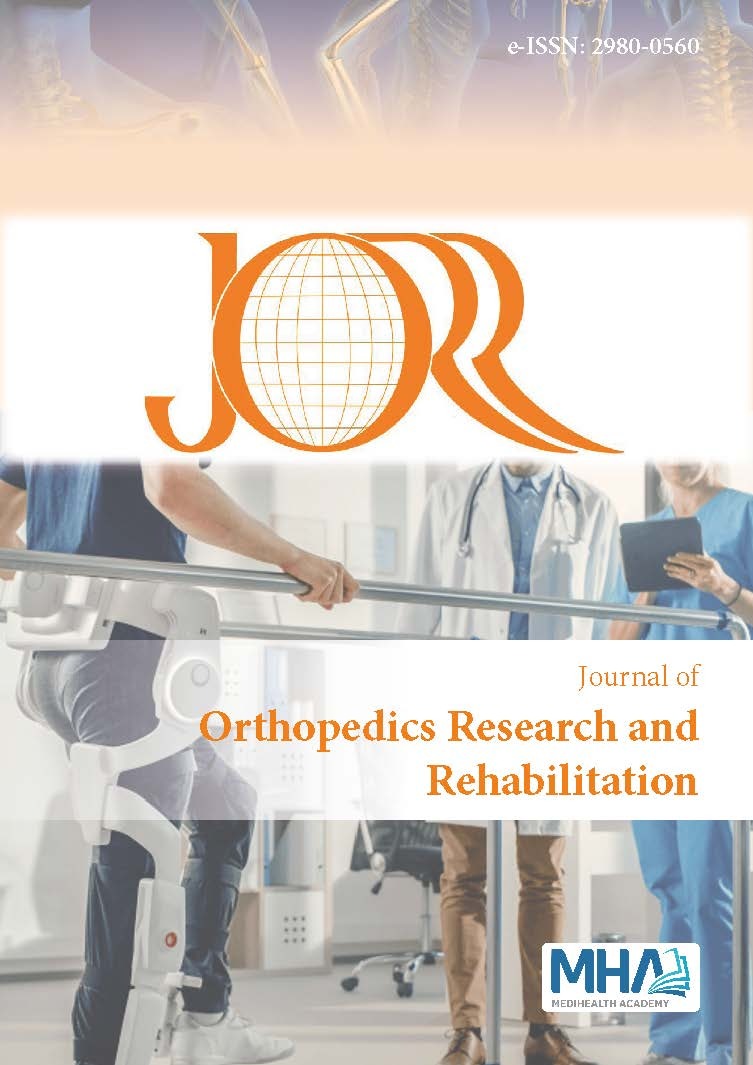1. Malliaropoulos NG. Non contact hamstring injuries in sports. MusclesLigaments Tendons J. 2013;2(4):309-311.
2. Bourne MN, Duhig SJ, Timmins RG, et al. Impact of the Nordichamstring and hip extension exercises on hamstring architectureand morphology: implications for injury prevention. Br J Sports Med.2017;51(5):469-477. doi:10.1136/bjsports-2016-096130
3. Green B, Bourne MN, van Dyk N, et al. Recalibrating the risk ofhamstring strain injury (HSI): a 2020 systematic review and meta-analysis of risk factors for index and recurrent hamstring straininjury in sport. Br J Sports Med. 2020;54(18):1081-1088. doi:10.1136/bjsports-2019-100983
4. Danielsson A, Horvath A, Senorski C, et al. The mechanism ofhamstring injuries-a systematic review. BMC Musculoskelet Disord.2020;21(1):641. doi:10.1186/s12891-020-03658-8
5. Hägglund M, Waldén M, Ekstrand J. Injury recurrence is lower at thehighest professional football level than at national and amateur levels:does sports medicine and sports physiotherapy deliver? Br J Sports Med.2016;50(12):751-758. doi:10.1136/bjsports-2015-095951
6. Monajati A, Larumbe-Zabala E, Goss-Sampson M, Naclerio F. Injuryprevention programs based on flywheel vs. body weight resistancein recreational athletes. J Strength Cond Res. 2021;35(1):S188-S196.doi:10.1519/JSC.0000000000002878
7. Burton I, McCormack A. Inertial flywheel resistance training intendinopathy rehabilitation: a scoping review. Int J Sports Phys Ther.2022;17(5):775-786. doi:10.26603/001c.36437
8. Berg HE, Tesch A. A gravity-independent ergometer to be used forresistance training in space. Aviat Space Environ Med. 1994;65(8):752-756.
9. Maroto-Izquierdo S, García-López D, Fernandez-Gonzalo R, MoreiraOC, González-Gallego J, de Paz JA. Skeletal muscle functional andstructural adaptations after eccentric overload flywheel resistancetraining: a systematic review and meta-analysis. J Sci Med Sport.2017;20(10):943-951. doi:10.1016/j.jsams.2017.03.004
10. Wonders J. Flywheel training in musculoskeletal rehabilitation: aclinical commentary. Int J Sports Phys Ther. 2019;14(6):994-1000.
11. Douglas J, Pearson S, Ross A, McGuigan M. Chronic adaptations toeccentric training: a systematic review. Sports Med. 2017;47(5):917-941.doi:10.1007/s40279-016-0628-4
12. Gual G, Fort-Vanmeerhaeghe A, Romero-Rodríguez D, Tesch PA.Effects of In-season inertial resistance training with eccentric overloadin a sports population at risk for patellar tendinopathy. J Strength CondRes. 2016;30(7):1834-1842. doi:10.1519/JSC.0000000000001286
13. Ruffino D, Malliaras P, Marchegiani S, Campana V. Inertial flywheelvs heavy slow resistance training among athletes with patellartendinopathy: a randomised trial. Phys Ther Sport. 2021;52:30-37. doi:10.1016/j.ptsp.2021.08.002
14. de Hoyo M, Pozzo M, Sañudo B, et al. Effects of a 10-week in-seasoneccentric-overload training program on muscle-injury prevention andperformance in junior elite soccer players. Int J Sports Physiol Perform.2015;10(1):46-52. doi:10.1123/ijspp.2013-0547
15. Monajati A, Larumbe-Zabala E, Goss-Sampson M, Naclerio F. Theeffectiveness of injury prevention programs to modify risk factorsfor non-contact anterior cruciate ligament and hamstring injuriesin uninjured team sports athletes: a systematic review. PLoS One.2016;11(5):e0155272. doi:10.1371/journal.pone.0155272
16. 16. Askling C, Karlsson J, Thorstensson A. Hamstring injury occurrencein elite soccer players after preseason strength training with eccentricoverload. Scand J Med Sci Sports. 2003;13(4):244-250. doi:10.1034/j.1600-0838.2003.00312.x
17. 17. Hegyi A, Csala D, Péter A, Finni T, Cronin NJ. High-densityelectromyography activity in various hamstring exercises. Scand J MedSci Sports. 2019;29(1):34-43. doi:10.1111/sms.13303
18. 18. Tsaklis P, Malliaropoulos N, Mendiguchia J, et al. Muscle and intensitybased hamstring exercise classification in elite female track and fieldathletes: implications for exercise selection during rehabilitation. OpenAccess J Sports Med. 2015;6:209-217. doi:10.2147/OAJSM.S79189
19. 19. Guruhan S, Kafa N, Ecemis ZB, Guzel NA. muscle activation differencesduring eccentric hamstring exercises. Sports Health. 2021;13(2):181-186.doi:10.1177/1941738120938649
20. Cuthbert M, Ripley N, McMahon JJ, Evans M, Haff GG, Comfort P. Theeffect of nordic hamstring exercise intervention volume on eccentricstrength and muscle architecture adaptations: a systematic review andmeta-analyses. Sports Med. 2020;50(1):83-99. doi:10.1007/s40279-019-01178-7
21. van den Tillaar R, Solheim JAB, Bencke J. Comparision of hamstringmuscle activation during high-speed runningand varioushamstringstrenghthening exercise. Int J Sports Phys Ther.2017;12(5):718-727.
22. Pedersen H, Saeterbakken AH, Vagle M, Fimland MS, Andersen V.Electromyographic comparison of flywheel inertial leg curl and nordichamstring exercise among soccer players. Int J Sports Physiol Perform.2021;16(1):97-102. doi:10.1123/ijspp.2019-0921
23. Martín-San Agustín R, Castillo-Ballesta L, Llobat Sancho J, et al.Comparison of electromyographic activity during hip extensionexercises under gravitational or inertial loading conditions. SportsHealth. 2022;14(2):246-253. doi:10.1177/19417381211011407
24. Hermens HJ, Freriks B, Disselhorst-Klug C, Rau G. Development ofrecommendations for SEMG sensors and sensor placement procedures. JElectromyogr Kinesiol. 2000;10(5):361-374. doi:10.1016/s1050-6411(00)00027-4
25. Thorborg K, Petersen J, Magnusson SP, Hölmich P. Clinical assessmentof hip strength using a hand-held dynamometer is reliable. Scand J MedSci Sports. 2010;20(3):493-501. doi:10.1111/j.1600-0838.2009.00958.x
26. Macdonald B, McAleer S, Kelly S, et al. Hamstring rehabilitation in elitetrack and field athletes: applying the British Athletics Muscle InjuryClassification in clinical practice. Br J Sports Med. 2019;53(23):1464-1473. doi:10.1136/bjsports-2017-098971
27. Cheon S, Lee JH, Jun HP, et al. Acute effects of open kinetic chainexercise versus those of closed kinetic chain exercise on quadricepsmuscle thickness in healthy adults. Int J Environ Res Public Health.2020;17(13):4669. doi:10.3390/ijerph17134669
28. Hu C, Du Z, Tao M, Song Y. Effects of different hamstring eccentricexercise programs on preventing lower extremity injuries: asystematic review and meta-analysis. Int J Environ Res Public Health.2023;20(3):2057. doi:10.3390/ijerph20032057
29. Timmins RG, Filopoulos D, Nguyen V, et al. Sprinting, strength, andarchitectural adaptations following hamstring training in AustralianFootballers. Scand J Med Sci Sports. 2021;31(6):1276-1289. doi:10.1111/sms.13941
30. Muñoz-López A, Fonseca FS, Ramírez-Campillo R, et al. Theuse of real-time monitoring during flywheel resistance trainingprogrammes: how can we measure eccentric overload? A systematicreview and meta-analysis. Biol Sport. 2021;38(4):639-652. doi:10.5114/biolsport.2021.101602
31. O’ Brien J, Browne D, Earls D, Lodge C. The Efficacy of Flywheel InertiaTraining to Enhance Hamstring Strength. J FunctMorpholKinesiol.2022;7(1):14. Published 2022 Jan 20. doi:10.3390/jfmk7010014
32. Mendez-Villanueva A, Suarez-Arrones L, Rodas G, et al. MRI-basedregional muscle use during hamstring strengthening exercises in elitesoccer players. Plos one. 2016;11(9):e0161356. doi:10.1371/journal.pone.0161356

